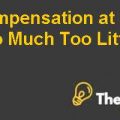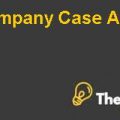The Procter & Gamble Company Case Study Solution
Equity securities are defined as stocks that are representing ownership of a company. These securities are tend to facilitate its shareholders with a steady income, known as dividends. However, these income could be fluctuated with the fluctuations in market value of the company and economic cycle. In 2014, the company holds equity securities of Common Equity, Convertible Class A preferred stock and Non-voting Class B preferredstock.
The par value of Class A preferred stock has been stated as $1 per share. Moreover, the Class B also stated the same amount if $1 per share. In addition, common stock also holds the stated amount of $1 per share.
It has been explained in annual report of the company that600 shares of Class A preferred stock were authorized. On the other hand, 200 shares of Class B shares were authorized. Lastly, the authorized shares for common stock were 10,000 shares out of which 4009.2 were issued both in 2014 and 2015.
As a result, company earned $1077 in 2015 and $1111 in 2014 through Class A preferredstock and $4009 in both years from Common stock. However, no earnings or addition in equity was made through Class B preferred stock. Therefore, it would not be part of company’s equity security.
The Procter & Gamble Company Harvard Case Solution & Analysis
What percentage of P&G's assets are debt-financed versus equity-financed in 2014 and 2015? Why do you think the company has followed this strategic financing policy? What is P&G's cost of debt in 2015?
It has been analyzed that company’s debt is total debt is decreasing from 2014 to 2015. In addition, the total shareholder’s equity of P&G Company is also decreasing in these two years. As a result, the valuation of total assets is also facing declining effect.
By dividing the value of short term and long term debt value to the total assets, it has been analyzed that 23.4% of company’s assets are financed by debt. However, if suing total liabilities as nominator, it has been identified that total liabilities are financing 51.3% of company’s assets in 2015. On the other hand, remaining 48.7% of assets are financed by total shareholder’s equity of the company.
In 2014, it has been analyzed that company’s total assets are valued at $144,266. Moreover, these assets are 24.5% financed by long term and short term debt and 51.5% financed by total liabilities. In addition, the 48.5% of total assets are financed by total shareholders’ equity.
Company is highly financed from debt and lesser from equity. However, it has been analyzed that company is trying to increase its equity financing and difference of 0.2% has been noted in two years. Company is following strategic financing policy under which debt financing is higher due to its advantages and savings from taxes and sharing of company.......................
'This is just a sample partial work. Please place the order on the website to get your own originally done case solution.










